PUNTLAND GEOGRAPHY ANSWERS
FORM FOUR GEOGRAPHY EXAMINATION 2012/2013
PART ONE:
MULTIPLE CHOICES:
1-B,
2-D,
3-A,
4-C,
5-B,
6-D,
7-A,
8-C,
9-B,
10-D
PART TWO
STRUCTURAL QUESTIONS
- (a) Distinguishing between terms
-
- a) Volcanoes: when magma forces its way into the cracks or weaknesses of the crust and may reach the surface or solidified within the crust
- b) Earthquakes: the sudden earth movements or vibration within the earth’s crust
(b) Labeling areas marked A, B and C on a diagram using given terms in a box
-
- A. Laccolith
- B. Sill
- C. Batholith
2. (a) Labeling areas marked A and B on given river stages
-
- A. Old age valley
- B. Youthful stage
(b) Writing appropriate given characteristics on the above river stages
(A) Deposition meanders
(B) Erosion, fast-flowing
3) Working out related questions to a map 1:100,000
-
- a. Six figure form of letter B = 234378
- b. Scale statement = 1cm to 1km
- c. Distance between A and B in km = 2 x 1km = 2km
- d. Possible occupation on the mapped area = Farming, fishing, transport, quarrying, trade, construction, etc.
4) (a) (i) Settlement: a place with buildings where people live and work
(ii) Labeling areas marked A and B on diagrams of different settlement patterns
-
- A. Dispersed settlement pattern
- B. Nucleated settlement patterns
(b) Differentiating above settlement patterns
(i) Dispersed settlement patterns: a type of settlement pattern where houses are built far apart. It is mainly associated with extensive farming where individual people own large of land.
(ii) Nucleated settlement patterns: a type of settlement pattern where houses are built close together to form a cluster and occur around a Centre giving an important service like a market or a borehole.
5) (a) Differentiate between
-
- Domestic tourism: the movement of people in their domestic country for pleasure
- International tourism: the movement of people outside their own domestic country for pleasure
(b) Identifying three economic benefits of tourism to Puntland:
-
- Earn foreign exchange
- Creates employment opportunities
- Leads development of infrastructures
- Leads to industrial development
- Promotes international understanding
- Source of revenue for the government
6) (a) Define “environmental conservation”: all the surrounding including the landscapes, water and the atmosphere
(b) Describe four problems associated with flooding as a hazard
-
- Loss of human life
- Loss of properties
- Destruction of crops
- Destruction of trees
- Washing away buildings
- Washing away roads and railways
- Causes soil erosion
- Causes poverty
- Cause water borne diseases
- Evacuation of people
7.(a) Mineral: a chemical compound which occurs in the earth’s crust and which forms the basis of rocks
(b) Metallic minerals occur in the earth’s crust as:
-
- Lodes: Large masses of magma of metallic mineral solidified in the earth’ crust
- Veins: masses of magma of metallic mineral solidified in layers deep in the earth’s crust
- Reefs: lodes and veins exposed to the surface by erosion
- Alluvial deposits: metallic minerals transported to the base of the slopes by the agents of erosion where they are deposited along the valleys with rock particles
(c) Methods used to extract metallic minerals from the earth’s crust
-
- Shaft or underground mining: appropriate mining method used to extract lodes and veins deposits from the earth’s crust
- Opencast mining: mining method used to extract reefs deposits from the earth’s crust
- Placer or adit mining: appropriate method used to extract alluvial deposits from the earth’s crust
8. (a) Differentiate the types of energy:
- (I)Renewable energy: Energy resources that can be reproduced or regenerated. This means they are inexhaustible or they can be used over and over again. Eg HEP or solar
- (ii)Non-renewable energy: energy resources that cannot be produced or regenerated. This means they are exhaustible or they can never be increased or replaced once used. Eg oil, coal, uranium, etc.
(b) Three types of fossil fuels:
-
- A coal: a hard black fuel mineral burnt as fuel to drive machines
- Oil: a thick liquid which does not dissolve with water. It is refined and burnt as fuel
- Natural gas: an air-like substance used as fuel
9) (a) (i) Total number of Arab League Countries: 22 countries
(ii) Cairo, Egypt is the headquarter for the Arab league countries
(b) Objectives for establishing Arab League countries
-
- To strengthen ties among member states
- To coordinate their policies and direct them towards the common goods
- To serve the common goods of Arab countries
- To ensure better conditions for all Arab countries
- To guarantee the future of all Arab countries and fulfill the hopes and expectations of all Arab countries
10) (a) Economic resources of Somalia is based on many items including:
-
- Livestock and livestock products
- Remittances
- Bananas and other fruits
- Frankincense and myrrh
- Fish and fish products
- Forest products
- Minerals such as salt
PART THREE : EXTENDED QUESTIONS
Answer only four questions out of the following six questions
1) (a) (I) Energy crisis refers to a situation where demand for a given fuel exceeds its supply
(b) Causes of energy crisis
-
- Increase of oil prices by cartels
- Depletion of wood fuel in developing countries
- Economic and political embargoes (ban)
- Over dependence on oil and its products
- To conserve country’s oil resources and depend on the world market for meeting its requirements
- Waste and misuse of energy
(b) Reasons why most Puntland energy potentials have not been yet exploited
-
- Shortage of necessary capital
- Lack of technology
- Over- reliance on wood fuel
- Low standard of living
- Lack of permanent rivers
- Energy sources such as geothermal are expensive
- Lack of industries which exploit energy
2) (a) i) “Regional industry”: a number of countries joined together who form a centre of manufacturing industries that produce a large range of goods. Eg NOC of Asia, Western Europe, Eastern USA, etc.
ii) Factors that influence the location of industries
-
- Capital : both labour force and industrial production as well as need for investment is necessary for the success of industrial development
- Skilled man power: inadequacy of skilled and trained labour force hinders industrial development
- Availability of raw materials: raw materials are processed into the new products
- Market: availability of market is necessary. This refers to the people, companies or organization that can buy the products.
- Infrastructures: road or railway used for movement for both raw materials and the end products is also necessary.
- Power: Electricity either from HEP or from burning fuel, is needed to run the industry
- Government policy: government helps industry by giving land, lowering taxes and exposing high tariffs on imported manufactured goods
- Water: water is needed both for domestic and for industrial use
- Person decision: this person is required to manage and run the industry
(b) Industrial significances for the economy of a country
-
- Industrialization creates employment opportunities
- Industrialization leads to the development of infrastructures
- Industrialization also leads to the development of social amenities
- Industrialization raises the standard of living
- Industrialization earns foreign exchange
- Industrialization leads to the growth of towns
- Industrialization creates market for agricultural products
- Industrialization diversifies the source of economy
- Industrialization increase the value of the local products
- Industrialization encourages research.
3) (a) (i) Fishing: an activity where man engages to catch aquatic animals in seas and in other water bodies as a source for food.
(ii) Describing how fish is caught using drift nets:
-
- Drift net hang vertically in the water
- It is drifted by fishing vessels
- They are weighted on the bottom edge
- They are supported along the top edge by floats
- Fish are caught by their gills becoming entangled in the mesh of the nets
(b) Problems facing fishing industry in Puntland
-
- Inadequate capital
- Fishing is a robber economy
- Lack of inadequate storage facilities
- Chemical wastes dumping in rivers, lakes and seas
- Inadequate local market
- Poor fishing equipment
4) (a)(i) Labeling plantation crops shown in the given photographs
-
- Sugarcane plantation
- Tea plantation
b) Comparing and contrasting the above named plantation crops
Growing conditions for sugarcane plantation |
Growing conditions for tea plantation |
|
|
|
|
|
|
|
|
|
|
|
|
|
5) (a) (i) wildlife: combination of undomesticated plants and animals in their natural habitats forming part of our natural resources
(ii) Significance of wildlife to the economy of Somalia
-
- It is a source of foreign exchange
- Wildlife maintains the ecological balance
- Forms the basis of tourism industry through wild games, birds, forests, etc.
- Forests form the sources of rivers
- Forests provide timber and wood fuel
- Wildlife is the basis for environmental protection
- Animals and forests are sources of food
- Vegetation adds humus to the soil
- Wildlife provides employment opportunities
- Wildlife enhances research
(b) Problems that wildlife faces in Puntland
-
- Inadequate capital and lack of trained personel
- Overexploitation of water resources
- Pressure on the existing land resulting from population increasing
- Poaching and hunting of animals whose products are highly valued. Eg elephant tusks
- Pests and diseases
- Droughts and fires
- Pollution caused by man’s activities
- Soil erosion threatening plant life
- Migratory culture of wildlife especially birds and animals
- Competition for the scarce pasture with the pastoralists
6) (a) (i) COMESA is extended as countries of “Common market for eastern and southern Africa”
(ii) Factors that influence trade
-
- Natural resources: countries which possess and exploit large resources usually carry on an active trade with external regions. Eg petroleum in the middle east
- The degree of industrial development: high industrialized such as Japan and Germany produce considerable quantities of manufactured goods for export
- Geographical position: some countries are well placed to take part of trade with countries having contrasting economies such as Singapore
- Tariffs and import duties: Heavy duties often reduce trade among countries similarly low or preferential tariffs often increase often increase trade among countries
- Population factor: there is difference in level of consumption of various items of corresponding to differences in size of population, in economic status and cultural requirements.
- Foreign investment: a country requires to have a capital invest to take part in trade especially the developing countries
- Government policies: the government determines who is to trade with, what to trade and volume of trade.
(b) Problems that trade faces in
-
- Fluctuation in world prices
- Producing similar goods as in the developing countries
- Political differences between two counties block trade between them
- Poor infrastructure





Recent Comments